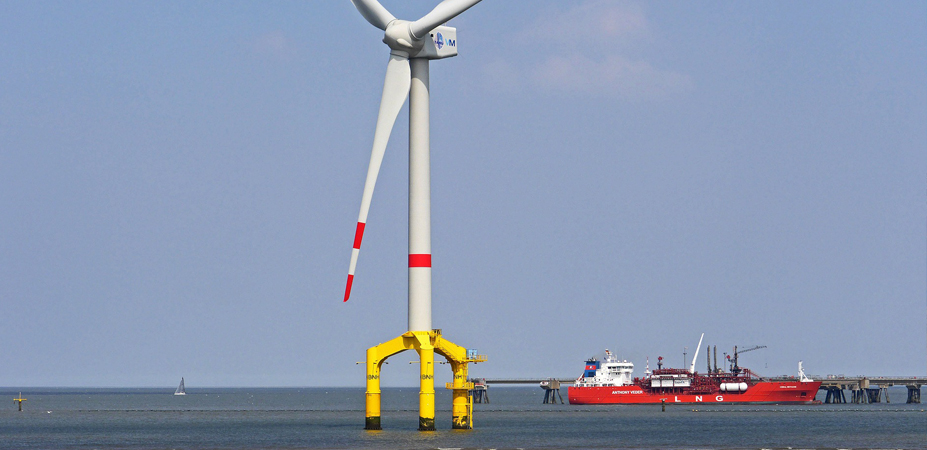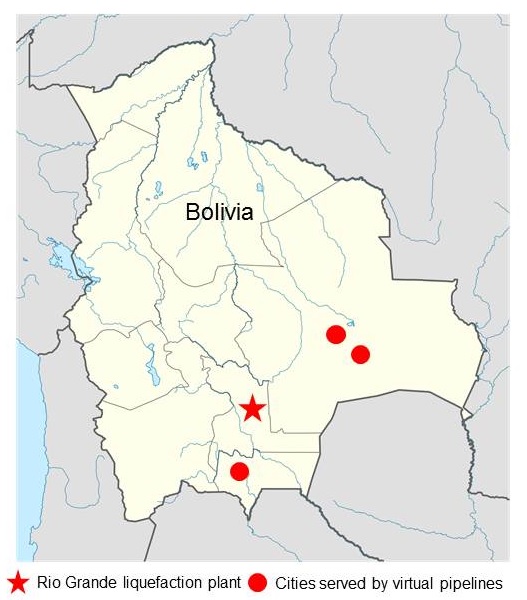
The Bolivian state energy company Yacimientos Petroliferos Fiscales Bolivianos (YPFB) is using an LNG virtual pipeline, which is a system where LNG is produced in a liquefaction plant and is transported in tanker trucks to customers. The YPFB virtual pipeline includes a fleet of tanker trucks and mobile regasification units to transport LNG produced in the Rio Grande liquefaction facility to supply natural gas to the residents and businesses of San Julian, San Jose de Chiquitos, and Tupiza, which are towns located far from the gas pipeline networks of Santa Cruz and Potosi. Figure 1 shows a map of Bolivia, the location of the Rio Grande liquefaction facility, and the cities that the virtual pipelines serve.

Figure 1: Map of Bolivia with locations of the liquefaction plant and cities using virtual pipelines
There may be opportunities for the United States to leverage such virtual pipelines. However, unlike in Bolivia one of the largest opportunities for virtual pipelines in the U.S. may be to supply natural gas for the replacement of propane, which is widely used in certain parts of the U.S. for household heating. Replacing propane is attractive primarily due to low natural gas prices. Some states such as Vermont and New Hampshire have recognized this and have started using virtual pipelines to supply natural gas to replace propane.
Virtual pipelines are finding applications in different parts of the world. Operators in the U.S. can learn from the Bolivian experience and further expand upon the successes in Vermont and New Hampshire for certain niche applications.
-Sina Vahabzadeh, Tyler Wilson, and Uday Turaga



















